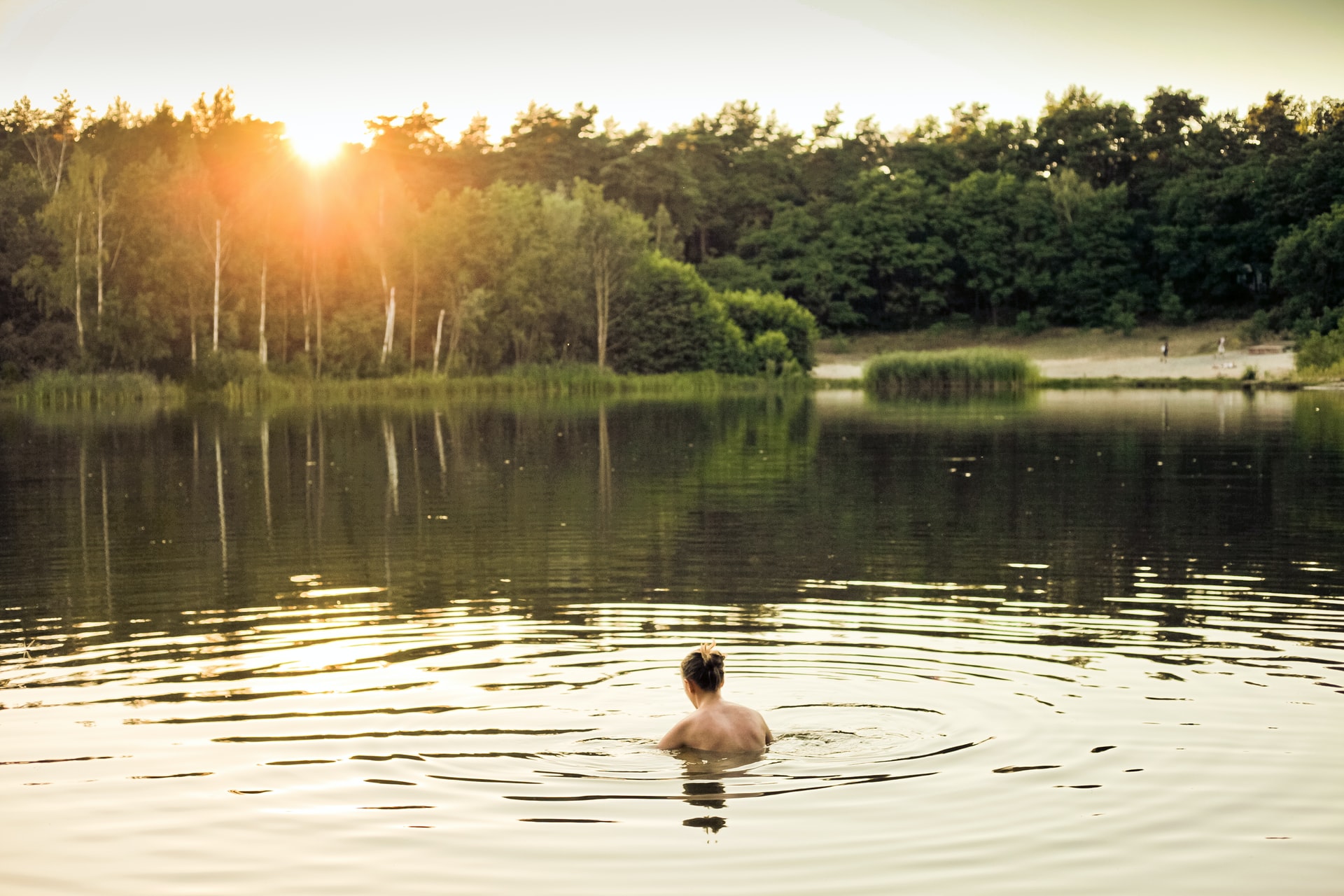On those hot summer days there is no better way to cool down than going for a dip in your local freshwater lake. However, every year there are always tragic stories of people getting into trouble whilst out on the lake.
Swimming in a lake requires preparation and a well-thought-out plan. Read on to learn about our top tips on how to stay safe when you enter the water.
Table of Contents
1. Learn to Swim
The most obvious safety tip is to learn how to swim. This may seem obvious but swimming in a lake is very different from swimming in a pool.
Lake swimming is different because a lake will have a natural current which makes swimming in a straight line difficult.
Furthermore, the floor of the lake will not be smooth and secure which prevents you from confidently standing up in the water.
Finally, the temperature will be a lot colder. Even experienced swimmers need to prepare for swimming in a freshwater lake.
If you are swimming in a freshwater lake for the first time, I would strongly recommend wearing a wetsuit and water shoes. Both will help your body adjust to the temperature whilst the buoyancy offered will help you float if you get into trouble out on the water.
2. Research
You should always research where you are intending to swim to ensure it is safe.
You should check whether any natural fungi are present in the lake which could be dangerous if touched or ingested. You should also check whether there are hidden currents which act below the surface of the water. You should also research the water temperature. It doesn’t matter whether it is a hot day – this does not directly affect the temperature of the water.
Most lakes are only suitable to swim in during certain summer months. If the lake is too cold you may end up cramping and/or seizing up which will put you in immediate danger.
3. Buddy-up
To ensure your safety you should always have a buddy or a group of people to go swimming with. This means someone will always be there to offer assistance if you get into trouble.
Some freshwater lakes will have designated swimming areas with lifeguards and life preservers. You must stick to these designated areas.
If you insist on going swimming on your own, you should tell a close friend or family member where you are going along with a detailed itinerary of what time you are leaving and returning.
You must ensure that you have a fully charged phone in case of emergencies but beware that you may not have great signal. I would only swim alone somewhere familiar that I had been before.
4. Stay Close to Shore

When swimming in a freshwater lake there are a couple of easy to follow rules which help keep you safe.
Firstly, enter the water slowly and avoid ‘diving’ or jumping in. This is because the sudden temperature change could cause your body to go into shock which will lead to serious difficulties.
Furthermore, diving or jumping into the water from wet rocks can be dangerous because you can slip and injure yourself.
Another reason to enter the water slowly is that allowing your body to adjust to the temperature will help you avoid cramps. As an experienced swimmer who has been in difficulty due to cramp, I can say that it isn’t pleasant – your body stops responding and you just cannot swim. I was lucky that I had a friend close by in a kayak to offer assistance.
Secondly, stay close to shore. Being close to shore gives helps you stay safe by giving you a quick and easy route out of the water if you do get into difficulties. That being said, being close to shore does not ensure safety. Even close to shore the ground can be uneven and rocky.
5. Keep an Eye Out for Boats
Most lakes will have boathouses. When swimming you need to keep an eye out for motorboats and other objects which may be on the water at the same time as you are swimming.
Staying close to shore should prevent you from entering boating lanes, but if you are further out you need to keep a close eye out for other people using the lake.
6. Once You’ve Cooled Down, Dry Off
We all love freshwater swimming because it can cool us off on a warm day. However, if you are in the water and you begin to shiver that is your body telling you it is time to get out and dry off.
Sometimes it can be helpful when swimming with kids to make them show you the inside of their lower lip. Regardless of skin tone, that area should be bright pink. If it starts looking at all blue, swim time is over, no matter how much fun the kids are having.
7. Make Sure you Wear Sun Cream (Sunscreen)
Applying sun cream before and after you enter the water will prevent you from developing sunburn during your day at the lake. Many people remember to apply it before entering the lake, but it is just as important to apply afterwards.
Most off-the-shelf sun cream contains chemicals which can damage the water’s natural eco-system so it may be worth looking into some environmentally friendly sun cream.
8. Stay Calm, Call for Help
Even if you follow all of the advice we have offered so far, you still may end up in difficulty whilst swimming.
The natural thing to do when we get into struggles on the water is to swim harder and panic. This is likely to use up vital energy and will often make the situation worse.
If you are in trouble you should: stay calm, take a deep breath and call for help.
If you are caught in reeds under the water, avoid kicking or pulling on the reeds as this could make the situation worse. Instead, stay calm and attempt to remove the reeds from the affected area.
If you are swimming with a buddy, make sure you keep an eye on each other so you can respond quickly if the other gets into trouble on the water.
Summary
These 8 tips are designed to keep you safe when swimming in freshwater lakes.
There is another golden rule to bear in mind. If something seems wrong, if you have any doubts or are uncertain about what you are doing then do not go in the water.
Safety must always come first, and it is not worth the risk – no matter the weather.
The Cool Wilderness Blog
Joe McQuillan, the author of this guest post, runs the Cool Wilderness Blog. He’s an avid outdoorsman with wide knowledge of a variety of gear. I highly encourage you to check out his site and read his story on his About Page.


